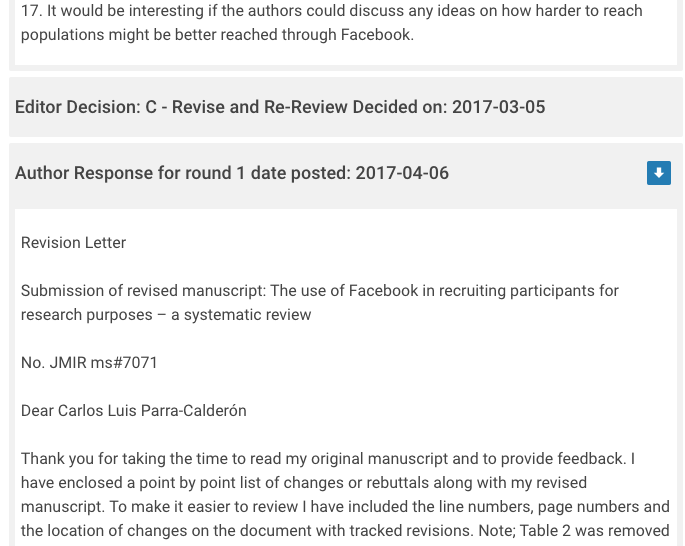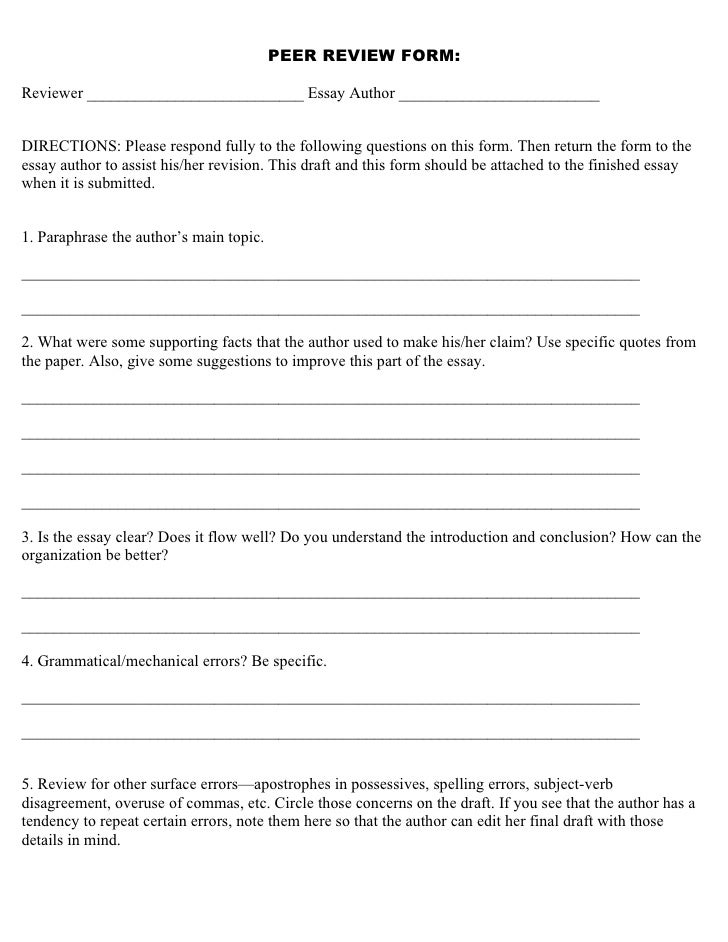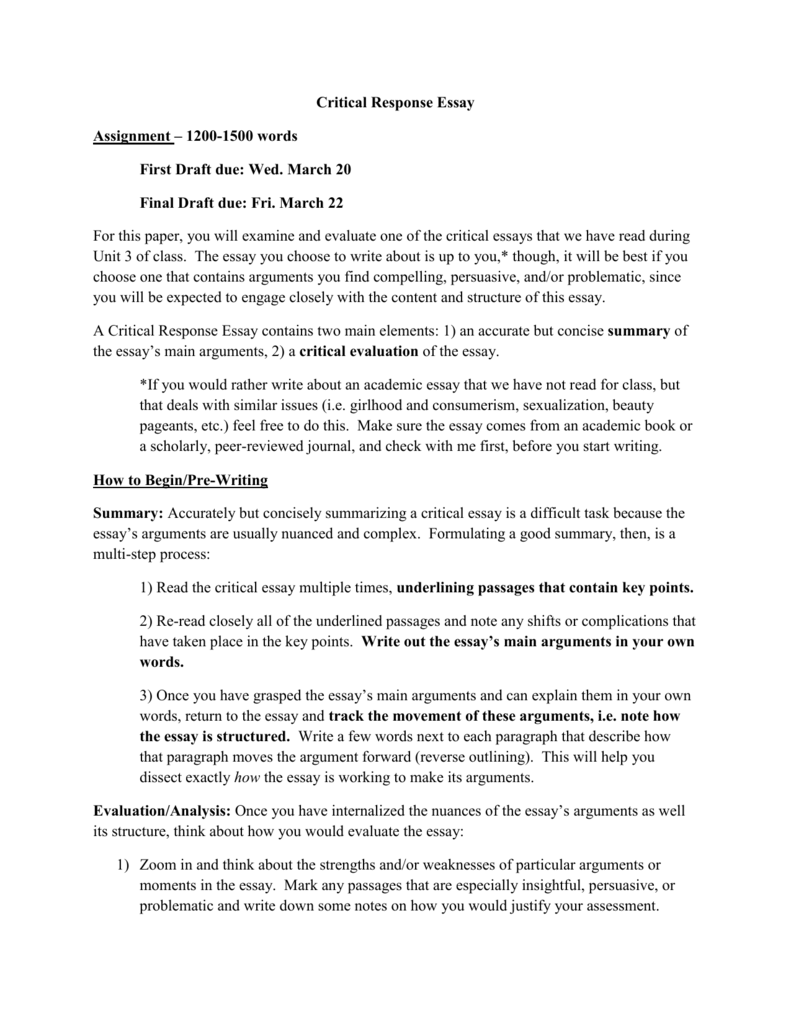
Reviewer Comments to Author(s): Reviewer #1 (Jillon Vander Wal, PhD): Overall, this is a clear, concise, and well-written manuscript. The introduction is relevant and theory based. Sufficient information about the previous study findings is presented for readers to Sample Peer-Review of a Fictitious Manuscript Reviewer A’s Comments to Authors: This is a prospective study that analyzed the factors associated with cancer progression after EMR of Barrett’s esophagus with high-grade dysplasia. Eighty patients underwent EMR and were followed every 3 months for 1 year, and every 6 months thereafter for 3 years 8/5/ · Here we have placed the example real time response to the reviewers comments. Each reviewer has been responded politely and thoroughly with detailed answers. while answering the comments you have to be very polite and professional and mention all the references needed in the response comments to make it more understandable and clear to the editor and reviewers
Here we have placed the example real time response to the reviewers comments. Each reviewer has been responded politely and thoroughly with detailed answers. while answering the comments you have to be very polite and professional and mention reviewer comments to author sample the references needed in the response comments to make it more understandable and clear to the editor and reviewers.
Manuscript ID: CHEMR1 Article Type: Research Paper Title: Mesoporous CuS nanospheres decorated rGO aerogel for high photocatalytic activity towards Cr VI and organic pollutants. Thank you very much for giving us a chance reviewer comments to author sample revise our manuscript.
We have carefully read all comments and have tried our best to revise the manuscript as per reviewers suggestions, which we hope to meet reviewer comments to author sample acceptance requirements. Reviewer comments to author sample 1 and reviewer 3 comments have been yellow highlighted because both the reviewers have almost same comments and suggestionsreviewer 2 c omments have been red highlighted in the manuscript.
Reviewer 1 This submission reported the fabrication of Mesoporous CuS nanospheres decorated rGO aerogel and its photocatalytic performances towards Cr VI reduction and organic pollutants degradation.
This submission can be considered acceptance subject to addressing the major issues. The authors are suggested to shorten the description on material characterizations, and enrich the discussion on the photocatalytic abilities toward Cr VI reduction and organic dyes degradation along with the corresponding mechanism.
Also, the influence factors of the photocatalysis should be considered. Response: Respected reviewer thank you very much for your valuable suggestions. Your suggestions made a huge improvement in our research paper.
According to your comment 1we have added detailed discussion to photocatalytic mechanism and added different characterization, which are needed to deduce photocatalytic mechanism. Like Scavenger studies, VB-XPS and Mott-Schootty measurements. All the changes are marked in yellow in the revised manuscript for your comments.
As described in 3. The formed Cr III was easily precipitated as Cr OH 3. The reduction mechanism of Cr VI should be revised. The authors should make a major revision to this sector. The authors should study how the pH influence the photocatalytic ability of the photocatalysts.
Finally the authors should report the reuse of photocatalysts for Cr VI reduction. Response: Respected reviewer thank you again for your valuable comments. According to your suggestion, we have thoroughly studied the pH effect on Cr VI reduction and we have found out from the results that the highest reduction was obtained in acidic pH.
You can see the results and description discussed in page 18, section 5. And the effect of pH on dye degradation is present in supplementary data Fig. The obtained results were consistent with the previous reports for pH effect on Cr VI reduction The modified study is marked in yellow in the revised manuscript.
Recently, many papers concerning photocatalytic Cr VI reduction and organic dyes degradation over different photocatalysts like MOFs and MOFs composites were published. The authors should make a comparison with the counterpart photocatalysts to highlight the advantages of the photocatalysts in this paper.
Response: Dear reviewer after your valuable advice we have added the comparison of our photocatalyst with other photocatalyst and latest MOF composites. We have further compared this aerogel with other techniques like MOF based composites for the reduction of Cr VI in Table S1. You can find the compared discussion in page 18, section 5 and line And the required results are presented in supplementary data Table S1.
Compared to other techniques this material is more efficient in the sense of its recovery and less time consumption. While this composite is an aerogel and it can be easily recovered. The required changes are presented in supplementary information Table S1, reviewer comments to author sample. Response: Respected reviewer thank you again for your comments. According to your suggestion, we have studied the simultaneous removal of Cr VI and RhB dye. And presented in the revised manuscript pagesection 6.
The roles of superoxide radicals during the Cr VI reduction and organic dyes decomposition should be studied. Response: Dear reviewer, we have studied the role of superoxide radicles in the reduction of Cr VI and organic dye degradation by scavenger studies.
The role of superoxide radicles for Cr VI is presented in page 18, section 5. And role of super oxide radicles for RhB is presented in page 26, section 7 and Fig.
The active species capture experiments and ESR determination should be added, reviewer comments to author sample. Response: Dear reviewer thank you again for your valuable suggestions and comments. We have performed the scavenger studies for both Cr VI reduction and RhB dye degradation to find out the active species in the photocatalysis.
To further confirm this we have performed ESR, the results obtained from ESR are consistent with the scavenger studies as shown in pagesection 7, Fig, reviewer comments to author sample.
There are many improvements to be made in the present manuscript, such as the unit format, subscript format, spaces format, reference format. The major comment is that the photocatalytic mechanism lacks of scientific explanation, which is as follows: 1.
However, the band gap of the composite material is only 1. Thus, it is difficult to generate hydroxyl radicals under visible light irradiation.
The authors can test the VB, CB and ESR to further deduce the mechanism. Response : Respected reviewer thank you for your valuable comments and suggestions. We have tried our best to improve this manuscript as per your suggestions. We believe that now reviewer comments to author sample manuscript is in a better condition and we hope that there are no mistakes regarding format, superscripts, subscripts and references.
We have tried our best to improve this manuscript. According to your suggestion, we have performed the ESR, VB-XPS, mott-Schotty measurements and scavenger studies to fully understand the mechanism and find out the active species.
According to the ESR and scavenger studies, the active species taking part in the photocatalytic reduction and degradation are superoxides, holes and hydroxyl radicles as shown in Fig. The formation of hydroxyl radicles can be due to the rGO network structure. The rGO nanosheets not only act as a substrate for CuS-NS but also plays an important role as an electron reservoir, which helps in highly efficient separation of photoinduced charge carriers. So all the photoinduced active species are responsible for the degradation of organic dyes RhB and MB into smaller intermediates.
To further confirm the bandgap we have performed the UV-Vis DRS again and reviewer comments to author sample band gaps obtained were 1. S2 in the revised supplementary data. Thank you again for highlighting the misunderstandings in our manuscript.
This time we have carefully calculated the band gap and also performed VB-XPS and Mott-Schottky measurements to confirm the band gap calculations. Applied Surface Science, Photoredox catalysis over graphene aerogel-supported composites. Journal of Materials Chemistry A, 6 11 Response: Dear reviewer thank you again for highlighting the improvements we need to do.
We have corrected reviewer comments to author sample TEM image and scaled the missing part. As the inside of the Fig. And we have also explained the Fig. Response: Respected reviewer, according to your suggestion, we have added the description in method and results parts highlighted in red in revised manuscript.
Response: Dear reviewer we have added the required references in the mentioned lines and also added many other reviewer comments to author sample where needed. All the added references are marked in red in the revised manuscript. We have added references in line ,,,, After some additions and modifications in the manuscript the line numbers are changed. Response: Dear reviewer thank you again for your valuable comments and suggestions.
We have tried our best to fulfill all the required changes. We have corrected the font sizes and formats in the whole manuscript and rewrite all the sentences you asked for. All the modifications according to your suggestions have been marked in red in the revised manuscript. There are some important questions should be addressed before submitting as listed below.
Response: Respected reviewer thank you so much for the suggestions and comments you gave us. According to your suggestion, we have performed the Mott-Schotty measurement for CuS-NS and CGA-2 composite as presented in Fig.
S4 in revised supplementary data. Response: Dear reviewer we have modified and added the redox potentials in the graphical abstract. Comment 3: A rapping experiment must be added to determined the active species of reaction.
We have performed the scavenger studies for both Cr VI reduction and RhB dye degradation to find out the active specie in the photocatalysis. To further confirm this we have performed ESR as shown in Fig. The results obtained from ESR are consistent with the scavenger studies. The results obtained for scavenger tests are presented in section 5, reviewer comments to author sample. The text is highlighted in yellow. Response: Dear reviewer we have performed the SEM-EDS to find out the actual content of CuS in the composite CGA-2 and the results are presented in Fig, reviewer comments to author sample.
Comment 6: Please optimize the Fig. c and dwhich are very complicated and not intuitive. Response : Dear reviewer Fig. Please perform a degradation test contain a mixture of Cr VI and cationic dye. Response : Respected reviewer thankyou again for your comments.
How to respond Reviewer's/Editor's Comment for Manuscript Revision - Response letter -- By. Dr. Asif
, time: 5:19
Reviewer Comments to Author(s): Reviewer #1 (Jillon Vander Wal, PhD): Overall, this is a clear, concise, and well-written manuscript. The introduction is relevant and theory based. Sufficient information about the previous study findings is presented for readers to Response: The authors thank the reviewer for his kind words and his approval for publication. This particular study only used high volatile coal such as Pittsburgh seam coal to determine the TIC needed to prevent flame propagation as function of coal particle size. Comment: They overstepped, however, in accepting the Nagy () recommendation that Sample Peer-Review of a Fictitious Manuscript Reviewer A’s Comments to Authors: This is a prospective study that analyzed the factors associated with cancer progression after EMR of Barrett’s esophagus with high-grade dysplasia. Eighty patients underwent EMR and were followed every 3 months for 1 year, and every 6 months thereafter for 3 years

No comments:
Post a Comment